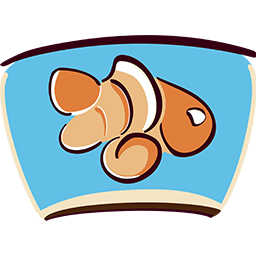General Information Definition
To greatly understand the General Information that is listed on each of the profile pages, we have created a list of definitions to refer back to when you aren't sure of the difference between the various levels that are listed. Although this information is meant to be precise, to fit the layout of all species, there may be some that could technically fall into more than one grouping. In the case of this, we will pick the one that has the highest significance (for example; if a fish can be both community or semi-aggressive only when they are breeding, then we will list them as semi-aggressive to provide a better picture worst case).
Additionally, please note that any of the information shared may not always match the specific species that you have in the tank. There are many cases where an aggressive fish, maybe community-friendly, although a large number of specimens of that species are aggressive. Always watch out for any abnormal behaviors that may be displayed once the species has been established and becomes more comfortable with its territory.
Ease of Treatment
Easy: The treatment method that is provided, will be easy to treat (includes chemicals that have dosing directions, or cures commonly find in every aquatic store).
Moderate: The treatment method that is provided, will not be easy, but also not difficult (can include methods that the species may not prefer - ex; physical treatment methods, which may require you to coax the species to take the treatment).
Difficult: The treatment method that is provided, might be difficult due to the chance of success (may vary of treatment used if multiple provided, depends on how fast the treatment is applied if the disease is highly fatal or can cause deformation, depends on the stage of the disease in the species, or may depend on other factors that vary from tank to tank and species to species).
Unknown: There is no known current treatment method that has a success rate proven over multiple tests (one-off treatments, very low likelihood that the given treatments may work due to genetic roots).
Temperament
Peaceful: This species may chase after its own species, but will very rarely fin-nip or chase other species within their environment.
Semi-Aggressive: This species will chase its own species and/or other species that may get within a zone it has established.
Aggressive: This species will attack any other species that will not defend itself, or that keeps going within a zone that it has established.
Swimming Zone
Bottom: This species will find most of its life on the substrate, or near the bottom levels of the aquarium.
Middle: This species will find most of its life swimming in the middle region of the aquarium, with some travel at the bottom or top region.
Top: This species will find most of its life swimming at the surface of the water, with some travel near the middle region.
All: This species does not have any specific swimming region specifically, and can be found on all levels dependent on the specific individual.
Ease Of Care
Easy: This species has no specific care that requires aspects such as specific water parameters, diet needs, or additional equipment.
Moderate: This species has some specific care requirements that may require specific water parameters, diet needs, or additional equipment.
Difficult: This species has very specific care requirements related to diet needs, water parameters, and/or requires additional equipment.
Ease Of Breeding
Easy: This species will easily reproduce without any special requirements.
Moderate: This species may require a specific diet, water parameters, or habitat requirements.
Difficult: This species requires a very specific diet, water parameters, and/or habitat requirements. Additionally, you may be required to pull out the male or female species after mating has occurred to avoid any harm to either.
Unknown: This species does not have any known reliable method of breeding within captivity.
Lighting Requirements
Low: PAR values between 0-30.
Moderate: PAR values between 30-80.
High: PAR values between 80-150.
Growth Rate
Slow: This species may only grow less than 2 inches per month.
Mild: This species will grow around 2-4 inches per month.
High: This species will grow faster than 4 inches per month.
Placement
Foreground: This species tends to be rarely smaller in size or grows slower than others, therefore placement within the front zone of the aquarium will highlight it.
Midground: This species tends to be average in size or average growth, and therefore is recommended to be placed within the middle zone of the aquarium in order to provide viewing angles for foreground and background species.
Background: This species tends to grow rather large in size or fast in growth, and therefore is recommended be to placed within the back zone of the aquarium in order to hide aspects and provide viewing angles for foreground and midground species.

